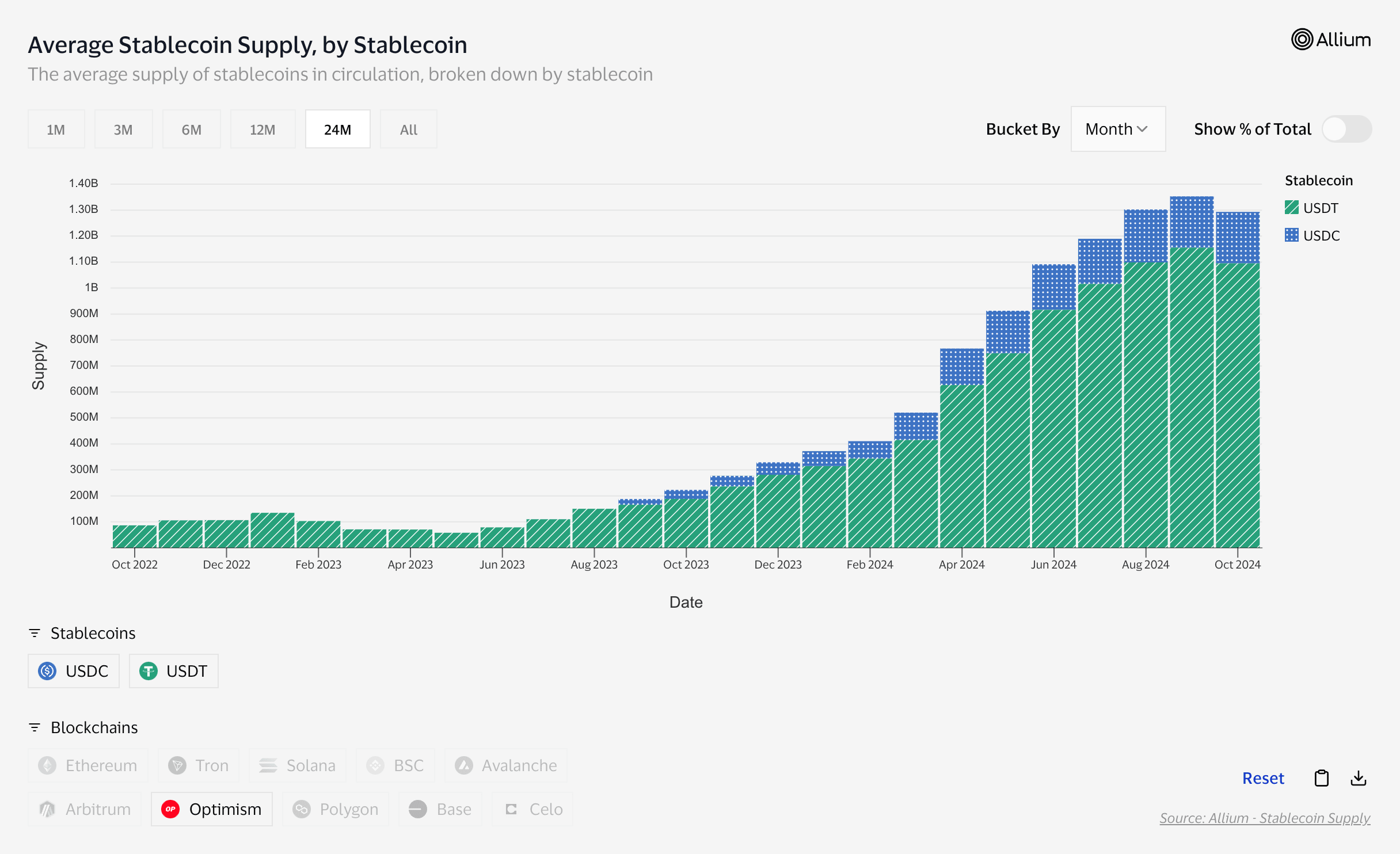superUSD - Fueling Superhcain Public Goods Through USD-backed Stablecoins - PRD
This is written PRD-style to help flesh out my thinking without inside knowledge of the existing insights and initiatives at OP. It's a way for me to sharpen product sense and execution instincts, while helping me to understand areas I am interested in.
Vision and Mission
OP's mission is to scale Ethereum while funding public goods.
This document defines scale as growing the ecosystems users, chains, developers, and apps while overcoming limits such as costs, latency, security, and fragmentation.
Interoperability is a Core Outcome
Given the Superchain thesis, a product or initiative should tie to interoperability amongst Superchains.
In support of this goal, the product should:
- Attract developers who build / port apps that have strong PMF (now or near future)
- Augment the funding model whereby revenue can be shared with the Collective
- Increase or accelerate liquidity across the Superchain (or Ethereum in general)
Product Overview - superUSD - the Superchain Stablecoin
What is it?
superUSD is a fiat-backed stablecoin with redemption and collateralization at parity with USDC in terms of collateralization and pegging mechanism, but has different monetization, governance, and minting model.
Unlike USDC, where all collateral interest accrues back to Circle, superUSD supports a flexible and open model for directing revenue to the Collective, to Superchains, or some other ecosystem participant. It does so by leveraging infrastructure from the M^0 Protocol, helping to reduce execution risk (see execution).
Because it uses the superERC-20 wrapper contract, it is fungible across chains (what this means is defined later).
What is the product Mission?
To fund public goods while providing incentives for dApp developers to build products on the Superchain or launch their own Superchain.
Problems and Opportunities
In this section, I'll outline the problems and opportunities, first prioritizing Users, the second adding the Business.
I'll also tie together how benefits to the Business which is a proxy metric for public goods can spin a flywheel that benefits Users.
Stablecoins have been considered the "killer app," in part, because it solves different problems for different users. This section will scope the primary use cases and focus on the users most applicable for the Mission.
Users
User Segments
This section breaks down some of the primary personas by alignment to the OP Mission, whether solving the persona's primary problem has some unique advantage as Superchain infrastructure, and whether the Product (the superUSD and associated developer tools) fits these needs.
| Segments | Problem | Mission Alignment | OP Advantage | Product Fit |
|---|---|---|---|---|
| Hedge Funds | Borrow USDC for hedge trades | Low | Low | High |
| Individuals in High Inflation Geographies | Native political currency deflats | Low | Low | High |
| DeFi investors and LPs | A way to earn yield without speculative exposure | Low | Medium | High |
| Dapp Developers | Product Market Fit and Growth | High | Medium/High | High |
Primary User Persona
Business
Impact on Revenue
Launching superUSD would enable developers on the Superchain an additional revenue stream while supporting the mission of funding public goods.
Currently, the supply of the primary stablecoins (USDC/USDT) on the OP Network is around $1.3B.
If OP were to take 10% of the market for their own superUSD, $130M of supply (4-week treasury bill at 4.76% and receive 2% APY interest to the OP Treasury), this could add an additional $2.6M in annual revenue assuming interest rates remain at this level.
Over the past 24 months, total stablecoins on OP went from around 86M October 2022 to 1.29B October 2024, a 12.5% MoM growth in that period.

If the compounding is the same for the next 24 months, a 130M of superUSD in 24 months would be 2.2B, generating $44M per year, ceteris paribus (the market share of 10%, the interest on collateral, and the MoM growth over the past 24 months).
The risk is whether superUSD can reach 10% of current stablecoin user or beyond. This is addressed in the features and GTM.
There is a dependency on interest rates. Interest rates impacts two things that relate to revenue: the interest rate from collateral earned; and the volume of transactions.
Here is the 1M and Fed Funds rate for the same time period:[1]

Here is the revenue across L2s [2]

The primary goal is NOT about the interest
The goal is not about the interest revenue (although self-funding flywheel growth is a strong position).
A native, branded stablecoin can also be a mechanism for developer and user growth.
By leveraging the super ERC-20 token which provides cross-chain fungibility for any asset on the Superchain,
Developer Growth
Product Features
Execution
Roadmap / Priorities
Features
North Star Metric
The mission of superUSD is to scale Ethereum to 1 billion users while funding public goods. We want to track on a weekly active wallets, where a wallet is counted as active when it has a balance of $10 or more in superUSD.
Why?
Core Sub Metrics
Counter Metrics
Research
Revenue Overview of L2
This shows the revenue across major L2s with a view into major L2s, a subset of which are Superchains (such as Base and Mode). [3]

Base an d OP Mainnet, in the past 30 days, generated roughly $2.6M to the sequencers.
Revenue Overview of Stablecoins
DeFi Protocols on OP
| Protocol | Chain | Category | Discord | Forum Post |
|---|---|---|---|---|
| TLX | OP | |||
| Curve | OP, Base | |||
| Aave | OP, Base | |||
| Velodrome | OP | |||
| Aerodrome | Base | |||
| Sommelier | OP | |||
| Yearn | OP, Base | |||
| Ionic | Mode | |||
| Sonne | Base, OP | N/A | ||
| Aura |